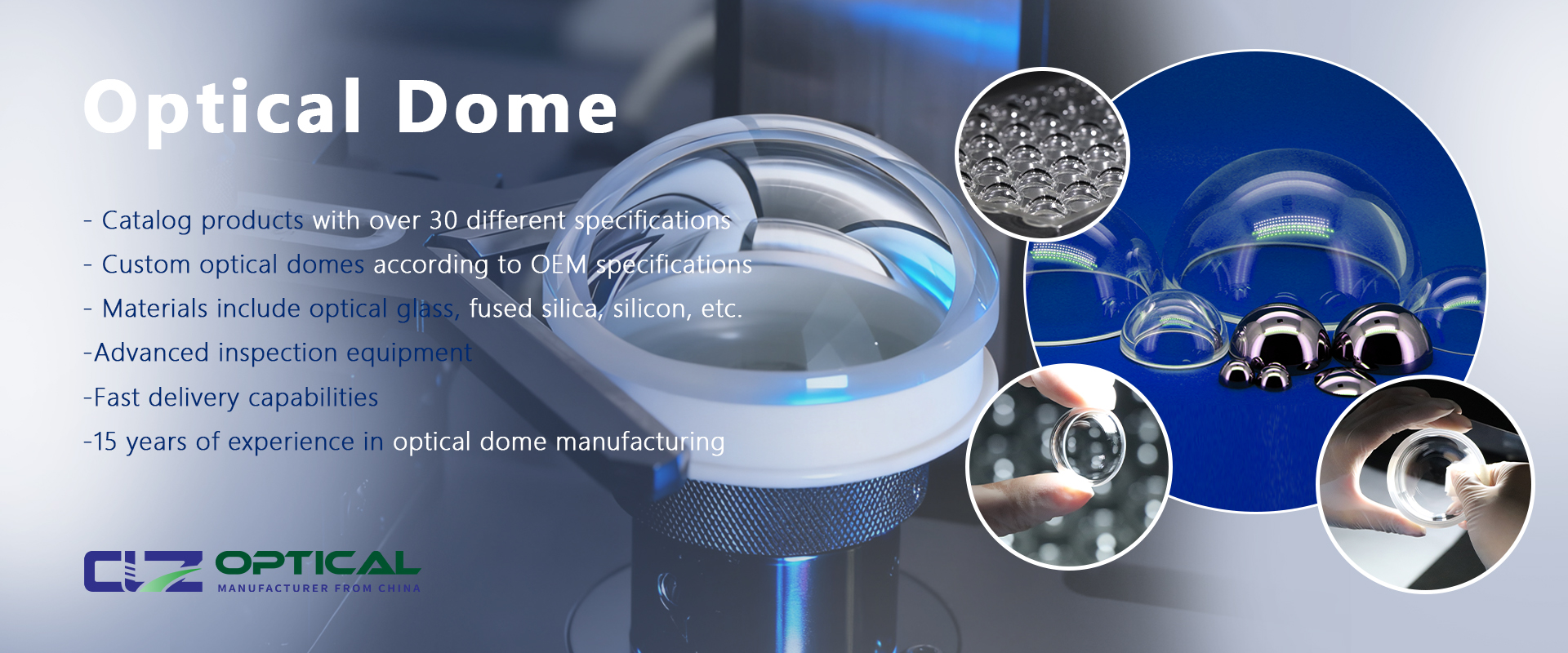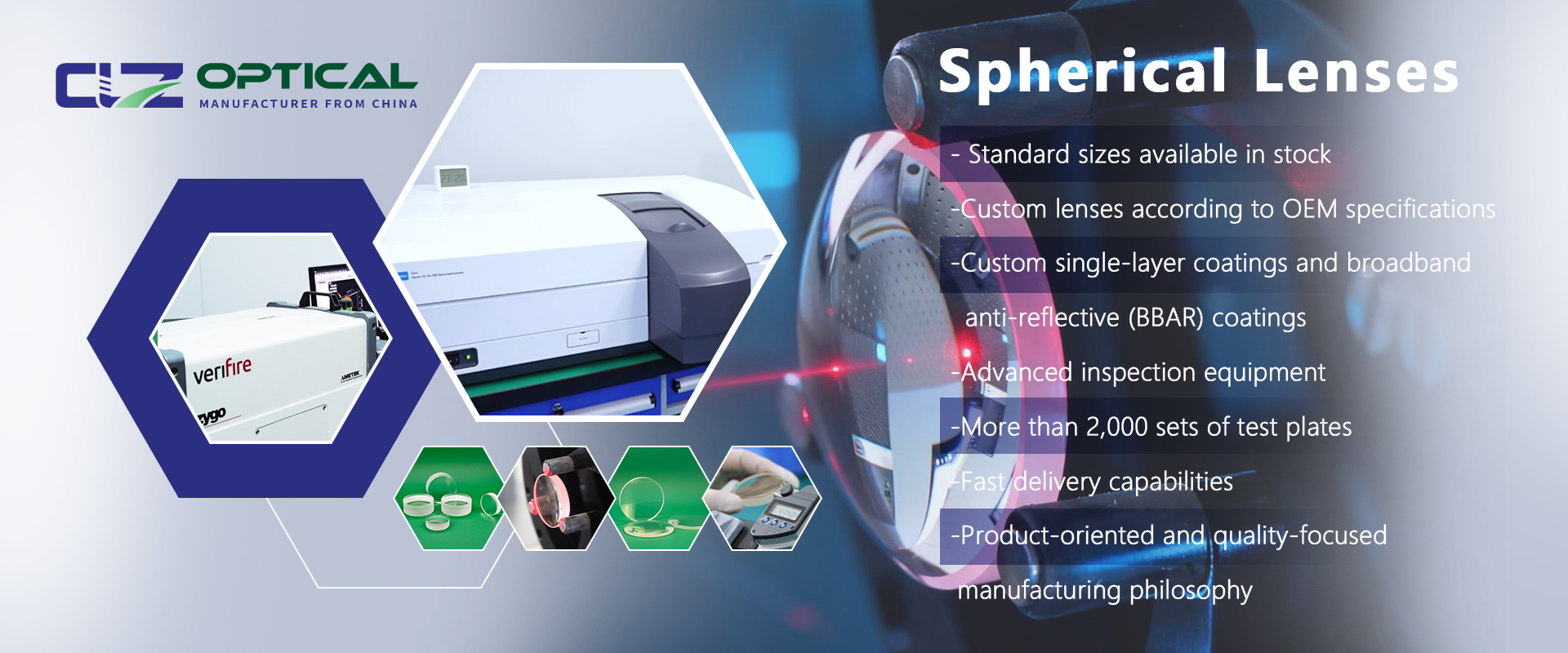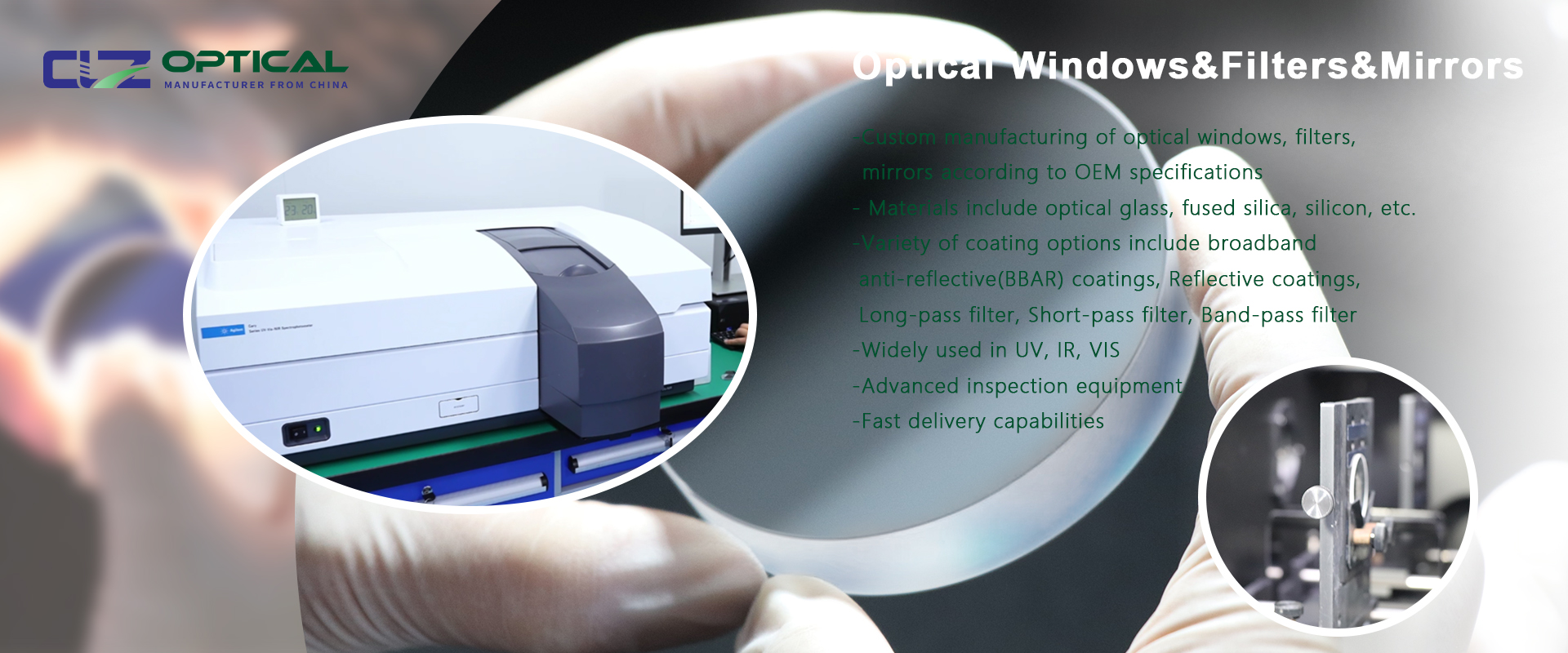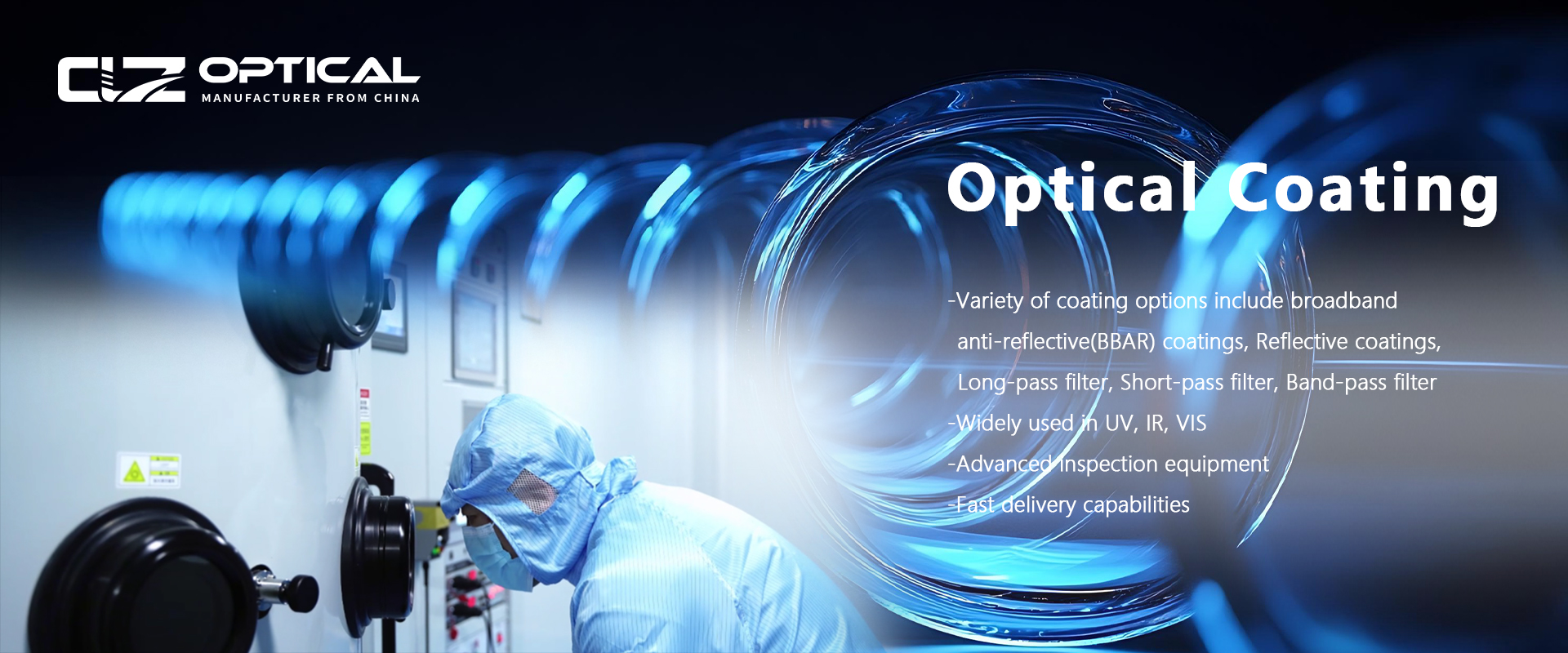SPHERICAL VS. ASPHERIC LENSES
Jul. 15, 2022
Optical lenses can be divided into three main categories: spherical, aspheric, and cylindrical. Each of these three types offers unique characteristics that make them suitable for different use cases.
The following article focuses on spherical and aspheric lenses, outlining their unique characteristics, key benefits and typical applications.
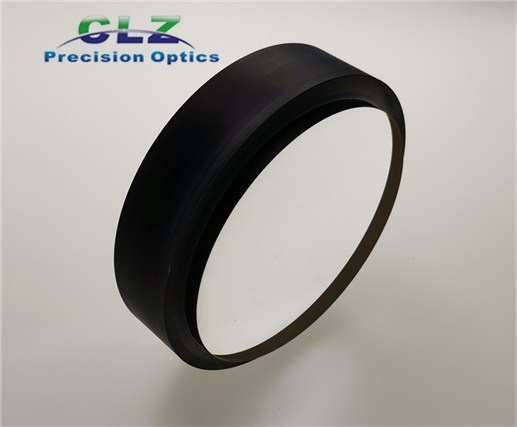
Custom MgF2 Coated Achromatic Lenses
Spherical Lenses
Spherical lenses (sometimes called single lenses) are optical lenses with a spherical surface whose radius of curvature is uniform over the entire lens. They are constructed so that the light entering them diverges or converges, depending on the lens design. A concave spherical lens has a negative focal length, causing the incident light to diverge (producing a false image). In contrast, a convex spherical lens has a positive focal length, which causes the incident light to converge (creating both real and virtual images). The resulting real image is highly focused, while the resulting virtual image is highly magnified.
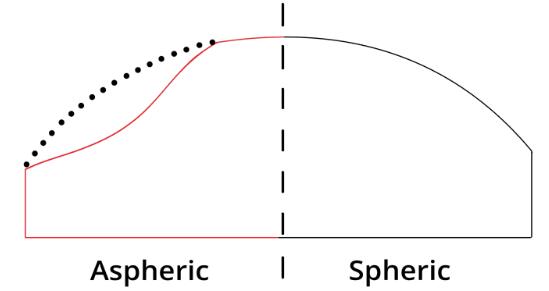
Spherical lenses are widely used in imaging applications. Conjugate ratio, lens shape, radius of curvature, lens material, transmission, wavefront distortion, scattered light, and types of coating are all features that must be considered when choosing a lens.
The main advantages of using spherical lenses in optical systems are their simpler surface design and lower manufacturing costs. These advantages make them suitable for a variety of imaging applications in a variety of markets. Plano-convex lenses are typically used for light collimation and monochromatic illumination operations where infinite or near-infinite conjugate imaging characteristics are required. Flat-concave lenses are used for optical applications requiring projected light, extended beam, or extended system focal length.
Aspheric Lenses
Aspheric lenses are optical lenses that have a rotationally symmetric aspheric, non-cylindrical shape. Unlike spherical lenses, their radius of curvature varies from the center of the lens to the edges.
Although aspheric lenses are challenging to design and manufacture, when constructed correctly, they can provide more optical power than comparable spherical lenses. Some of the key benefits of using aspheric lenses in optical applications are
● Fewer elements required in the optical assembly
● Reduced spherical aberration, distortion and edge astigmatism
● Sharper focus
● Larger aperture size
● Improved light focusing and collection efficiency
For these reasons, aspheric lenses are used in many imaging applications. They are commonly used in life science instruments, semiconductor wafer inspection tools, medical devices, and in microscope imaging objectives and other image lens assemblies in defense and aerospace night vision imaging optical systems that rely on precision optics.
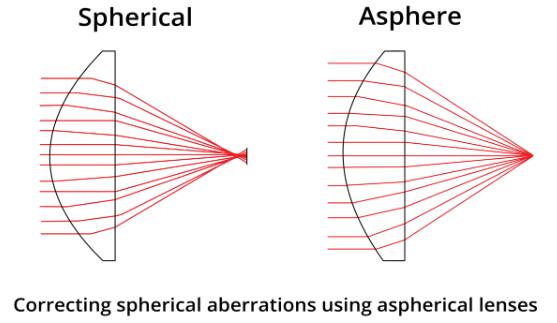
Use in imaging applications
Spherical and aspheric lenses are used in a wide range of imaging applications in a variety of end markets. They enable engineers, researchers and scientists to make very precise measurements using equipment such as advanced microscopes, laser scanners and other imaging devices.
Some examples of applications where spherical and aspherical lenses are found include.
● Fluorescence microscopy platforms: researchers use them to facilitate the identification and examination of specific parts of specimens (e.g., decoding DNA sequences and imaging individual cells and tissue samples)
● Cameras and laser-based ophthalmic tools for vision correction: used by trained clinicians and surgeons to diagnose and treat eye diseases and correct vision
● Semiconductor wafer inspection tools: used by computer chip engineers to map defects and probe cards
● Industrial laser machines: used by manufacturing companies to create and inspect products before, during and after manufacturing
● Night vision optics: used by front-line Marines and soldiers performing critical defense missions under the cover of darkness
For more information on our spherical and aspheric lens products, contact us today. To discuss an upcoming optics project with one of our experts, please request a quote.
Previous: A Basics of Optics (Ⅰ)












